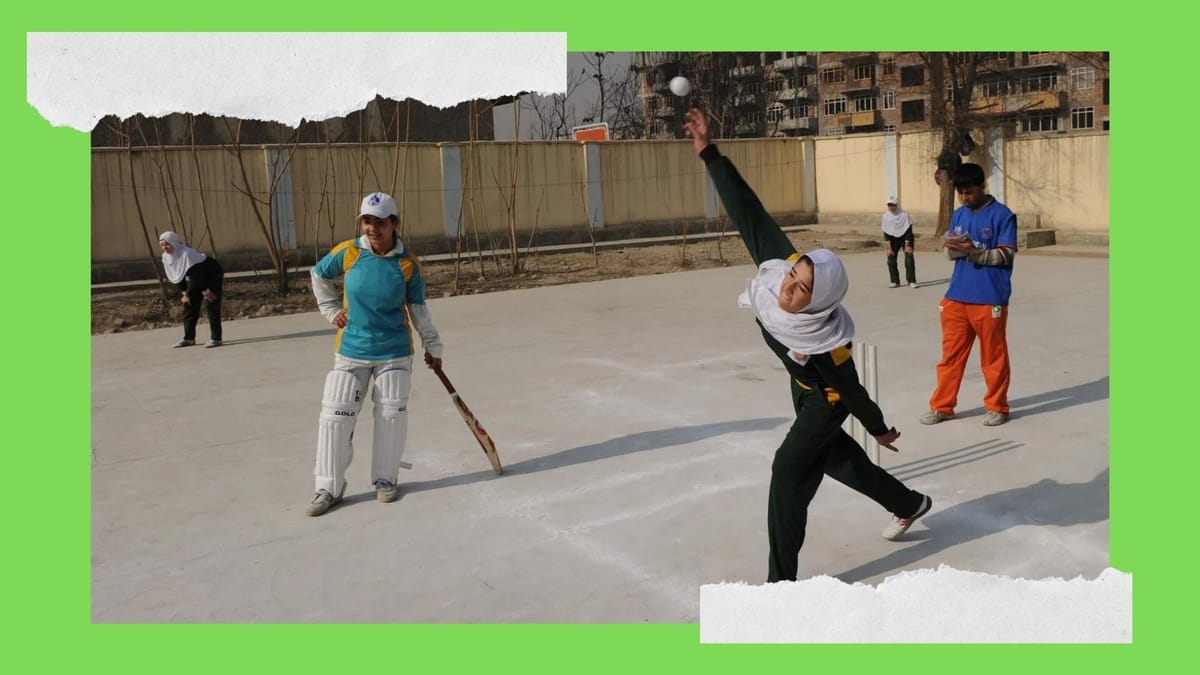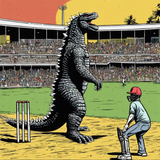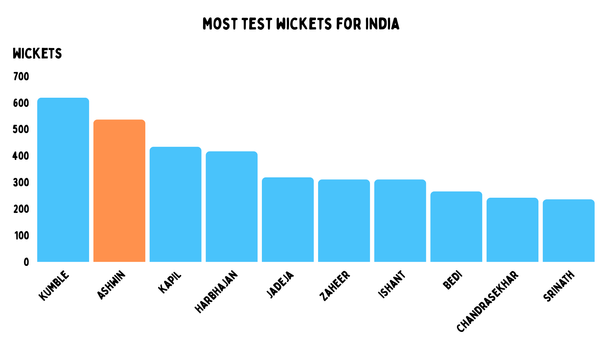The forgotten Afghans

Co-written by Estelle Vasudevan
When Hamid Hasan bowled 90 miles per hour with flags on his face, cricket had never seen anything like it before. This team were not like the others, they were exciting in how they played, but even more so in who they were. Cricket has the most incredible history, and yet it has never had anything like the Afghanistan men’s team.

And it keeps going, at the 2023 Cricket World Cup in India, Afghanistan were incredible. They lit up an otherwise somewhat drab round-robin stage, finishing with 4 wins, even if they sometimes did it in the most professional and solid way. Three of those wins came against former champions Pakistan, Sri Lanka and England. At one point, they were realistically in the race for a spot in the semi-finals. Crazy, when you remember that they made their debut in the World Cup just two editions back, in 2015, and didn’t win a game in 2019.
Theirs is a story of resilience and strength and it’s hard not to revel in their achievements, but a cloud hangs over their success. Because every win for the men’s team, every milestone, every barrier breached is a stark reminder of what the women in Afghanistan are barred from even dreaming of.
Afghanistan is one of the few countries where cricket’s popularity bloomed without the influence of British colonialism. Its popularity exploded in the 90s, when citizens returned to the streets of Kabul and Herat having learned the game in the refugee camps of Pakistan. The Afghanistan Cricket Board was formed in the mid-90s and by 2001, they were associate members of the ICC.

The men’s game thrived and grew in popularity, the women were forgotten, relegated to playing in secret. Despite many attempts to kick start the women’s game formally in the country, it took 9 years after the fall of the Taliban in 2001 for a national women’s team to be formed.
In those early years, the team was actively prevented from playing at several international tournaments, tucked away in the shadows of a men’s team that was capturing the imagination of the global audiences. The ACB were reportedly facing threats by the Taliban for even entertaining the thought of allowing women to play sport. However, they aren’t the only part of this story. The ACB also didn’t really seem to care too much about the development of the women’s game.

Until they had to. As the men’s team’s profile grew - people around the world began to hear their story and the push towards Full-Member status began. Now, they had to care about it.
Pathway structures for women’s cricket are part of the criteria for gaining full membership at the ICC. Given that there are just 12 full members, you’d think those criteria needed to be strictly adhered to.
But the Afghan story had captured the world's imagination and the ICC granted the ACB full-member status in 2017. This meant that the men’s team now had greater funding and the opportunity to play Test cricket, with the provision that the women’s game would be developed, albeit with no timeframes for said development.
Despite the ACB using women in various promotional materials, real progress was slow and so imperceptible that you wondered if, despite all the promises, the women were being forgotten once again.
In 2020 there was some tangible progress at last, when a group of 25 women were granted 1-year central contracts. They could now dream of representing their nation in International cricket. That is all it was, it didn’t become a reality. The complete withdrawal of the US-led coalition forces from the region saw the return of the Taliban less than a year later.
When the Taliban seized control of the nation’s capital city in August 2021, desperation took over. The chaos was broadcast around the globe and the world watched as people tried to escape the country by any means possible. Who can forget the scenes of the Kabul airport overrun with young men and women fighting to board the last US planes to take off of the runway, the fear of death overcome by a fear of living under the rule of the Taliban.
During their first stint in power from 1996 to 2001, the Taliban banned most forms of entertainment, including most sports. But while their stance on cricket had softened, fears grew that the women’s game would be outlawed, particularly after a senior Taliban official had gone on record to say that it was ‘not necessary’ for women to play.
Over the next two years, the Taliban would go on to issue over 80 edicts, more than 50 of these directly targeting women and girls. Women were banned from going to parks, gyms, and public bathing houses, they were stopped from pursuing education beyond the sixth grade. Sport was outlawed.
With these sanctions, any hopes of continuing as professional women’s cricketers in Afghanistan were dashed.
The social, religious and cultural challenges of the past were strong but they were now replaced by a fight to simply survive in a country where women were rapidly being stripped of all their freedoms. Fearing their safety, all 25 of the contracted players managed to find their way out of Afghanistan, with 22 landing on Australian shores.
The ICC have been fighting calls to sanction the ACB since it was granted full-membership - many believe Afghanistan were given special treatment and fast-tracked despite not fulfilling the criteria set out by the ICC.
These calls got louder once the Taliban took control of the country once again, effectively killing any dreams of growing the women’s game. While there have been discussions about imposing a ban on Afghanistan, the ICC has stood steadfastly by their member nation, saying that the board “remains committed to supporting the Afghanistan Cricket Board and are not penalizing the ACB, or their players for abiding by the laws set by the government of their country,”.
The only real repercussions of not having women’s cricket really came from when the Australian men’s team refused to play them. However, Australia has often looked for any reason to not play small teams.
Could a ban of the ACB really convince the Taliban to ease their stance on women’s sport or would it simply mean that cricket, the one thing that brings joy to the Afghan people is taken away from them? This remains debatable, but what we do know is, the ICC is not considering a ban of the Afghan men’s side, even if it means that the board will not fulfill the requirement of having a women’s team. So, does a pathway to international cricket exist for the Afghan women?
The arrival of so many of their players in Australia brought new hope for a brighter future and the women have decided that they want cricket to be a part of that future. In December 2022, they wrote to the ICC requesting that they be given the opportunity to represent Afghanistan while being based in Australia.

This request was shot down by the ICC, who said that “the relationship with players in any of the ICC’s member countries is managed by the board in that country, the ICC does not get involved. Similarly, the authority to field men’s and women’s national teams lies solely with the member board in any country, not with the ICC.”
But could this be a feasible solution to the problem, at least in the immediate future? As part of their full-member benefits, the ACB are set to receive 16 million US dollars annually from 2024 - 2027, the same amount of money that Cricket Ireland will be given to run both their men’s and women’s programs. Could a portion of those funds be redirected to the women in Australia? With some coordination, it seems doable, especially because of the resources and existing structure for women’s cricket in Australia.
It’s probably political if the ACB say they are willing to share the money, and may not be seen well by their government.
The ACB has seemed apathetic to the women’s cricket cause for years now. It is obviously a really complicated issue for them, but can we say they sincerely tried to develop the game from 2010, when the 1st women’s side was established? Even since 2017, when them being granted full membership was contingent upon working towards establishing a women’s set-up, there were never any specific timeframes and their proposed objectives were vague at best.
Sofia Yosofzai, one of the 25 contracted players by the ACB in 2020, told Katya Witney of Wisden Cricket that they didn’t really get much support from the ACB even then. They were allowed to train just once a week because the ACB’s priority was the men’s team. Expecting the ACB to now go out of their way, of their own free will, to work with the authorities in Australia and the women, might be expecting too much. With everything that has happened since, they may struggle to openly help anyway.
This is where perhaps the ICC could step in. The Afghan National Olympic Committee fielded 17 female athletes at the 2022 Asian Games, including a volleyball team, drawn from the diaspora of Afghan athletes worldwide. It is believed that this was largely because the International Olympic Committee had warned the Taliban rulers that allowing women and young girls safe access to sports was a condition for the country's representation at the 2024 Paris Games.
When it comes to cricket, there is certainly an argument that stopping the men from playing, or even all their funding, will not help. But the ICC can siphon off the money, and set up a cricket team in Australia from the former women’s squad. Ensuring that there is an Afghanistan women‘s cricket team, and that the ICC is committed to enforcing their own rules is, let’s be honest, just doing the right thing. The idea that this will right itself any time soon is fanciful. They need to act.
Afghanistan is not like other cricket nations, and perhaps never will be. But if that is the case, cricket must also adjust to it.



